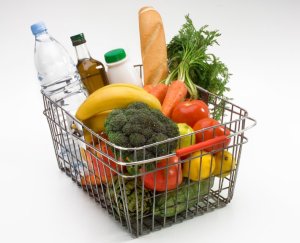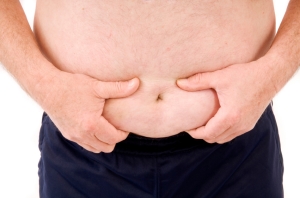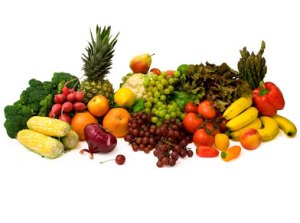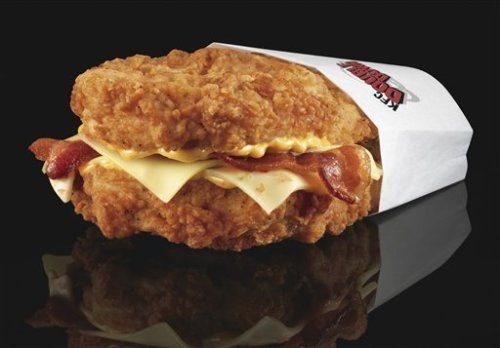 As some of you know, I’m in the thick of training for my marathon debut at the Philadelphia Marathon on November 21. But being the competitive athlete that I am, I’m not training just to finish. I’m training to finish in under 3 hours. I’ll be the first to admit, it’s quite an aggressive goal for a marathoner, let along a rookie such as myself. We’re talking a 6:51 pace for 26 miles, 385 yards. But thanks to my intense training plan from Cool Running, I am right on track. Over the past 5 weeks, I’ve averaged just under 50 miles per week. Yesterday’s training run was supposed to be 24 miles. I was up for it, but I figured if I’m going to go through the trouble of running 24, why not run the extra 2.2 to reach the full marathon distance? What’s another 18 minutes after I’ve been running for over 3 hours?
As some of you know, I’m in the thick of training for my marathon debut at the Philadelphia Marathon on November 21. But being the competitive athlete that I am, I’m not training just to finish. I’m training to finish in under 3 hours. I’ll be the first to admit, it’s quite an aggressive goal for a marathoner, let along a rookie such as myself. We’re talking a 6:51 pace for 26 miles, 385 yards. But thanks to my intense training plan from Cool Running, I am right on track. Over the past 5 weeks, I’ve averaged just under 50 miles per week. Yesterday’s training run was supposed to be 24 miles. I was up for it, but I figured if I’m going to go through the trouble of running 24, why not run the extra 2.2 to reach the full marathon distance? What’s another 18 minutes after I’ve been running for over 3 hours?
Answer: as long as I was feeling strong, I told myself, I would go for the marathon training run. Aside from logging the extra mileage, running the full marathon distance during training would give me the confidence come race day. Having the distance under my belt would eliminate pre-race jitters, nervousness, doubt, and all of the other feelings that first-timers generally feel.
Well, needless to say, I felt great yesterday. The weather was a perfect 65 degrees and breezy at the Jersey Shore. I maintained my steady training pace, although several times I had to tell myself, out loud, to slow down, and I completed my personal marathon in a little under 3 1/2 hours. I felt great during the run, after the run, and I feel pretty well today. So how is a regular runner like me able to go out for a 26.2 mile jog by himself and feel fine?
That’s a great question. To answer it, I’ll give you some of the tips that have worked for me during my training this summer and fall. Every runner is different; these are just the things that worked for me and that I believe can work for anyone as long as you listen to your body. Here we go…
Find a Good Program and Stick to It – If you’re training for an event or just serious about running regularly, it’s best to have a plan of action. There are a ton of samples online at sites like Runner’s World and Cool Running. Or just Google “Training Plan” and you’ll find a sea of good information. Once you get your plan, print it out and put it in a place where you can access it daily. Or, if you’re so technologically inclined, download it onto your smart phone and sync it to your calendar. The point is that you want this plan to stare you in the face at least once per day. Now, I know that we all have crazy schedules and the truth is that Life Happens. We have to be flexible with our plans and tailor them to fit our individual lives. Whatever your personal plan is, Plan Your Work and Work Your Plan!
Build Up to Marathon Distance – It’s not very smart to wake up one day and decide to go for a 26.2 mile jog. It’s entirely possible, but you’ll probably do damage to your body and you won’t be able to run again for several weeks. Follow your training plan and be sure you are ready to go the distance.
Rest – During the week leading up to your 26.2 mile jog, be sure to get as much rest as you can. Eight hours of sleep per night is ideal. The reason – you want to make sure your muscles are completely repaired from all of your training before you put additional stress on them. You want them to be as fresh and rested as possible. Also, the day before your run, try to stay off your feet as much as possible. Baby your legs so they can get as much rest as they can.
Hydrate – If you’re a runner, you should always drink a lot of water. I drink between a gallon and 150 ounces of water per day. Yes, I know that’s a lot more than necessary, but it’s what works for me and makes me feel well. Make sure your pee is always clear. Dark yellow pee is a sign of dehydration. The day before your long run, drink as much water as humanly possible. Friday, the day prior to my run, I drank nearly 200 ounces of water. If you’re drinking this much, make sure you’re also eating, else you could fall victim to hyponutremia, which is not good. If you wake up in the middle of the night, drink water. And then, as soon as you wake up, drink as much water as you can prior to your run. Tip: I usually run as soon as I wake up in the morning. however, for long runs like this, I like to wait about 3 hours. This gives me time to hydrate, eat, and digest before hitting the pavement.
Eat – Again, if you’re a runner, you should know your body’s food needs. Follow your regular eating habits during the week. Then, the day prior to your run, fuel up as much as you feel comfortable with. I’m NOT a believer in the gigantic pasta dinner a night before a run or event. Sure, you can eat 2 pounds of pasta in one sitting, but your body just can’t process all of that food at once, so the extra food is extraneous. Rather than the big pasta dinner, I fuel up all day the day before a run. I’ll eat a little more at breakfast, lunch, and dinner, while making sure I have larger healthy snacks in between those meals. I will eat more carbs during the entire day. For instance, in addition to my usual lunch of a garden salad with grilled chicken, I’ll add a serving of whole wheat penne or linguine. Then, for an afternoon snack, I will have another serving of this whole wheat pasta with some steamed broccoli. The downside is that I feel bloated, but the upside is that I know I will be properly fueled for my long run tomorrow. I burn about 120 calories per mile run, so during a 26.2 mile run, I’m burning well over 3,000 calories in 3.5 hours. Simply put: my body needs a large store of calories to draw from during this time.
Wear Comfortable Clothes – I don’t spend more money than I should on running gear because it looks cool (which it does). I spend it because it’s functional and comfortable. You’ll learn from running long distances that the tiniest of discomforts can ruin your day. You have to make sure you’re as comfortable as possible for the long haul. As an example, my outfit of choice yesterday was very typical of my summer running gear: Under Armour Cap, Sunglasses, iPod, Nike Dri Fit tank, Nike Dri Fit running shorts, Under Armour wicking socks, and my new Asics Gel Cumulus running sneaks. Note, I don’t make any money off of these or any other links in this post; I just like to share what works for me. If you’re a runner, you’ve heard the adage, “Nothing New on Race Day.” It’s true. I’ll never wear a new piece of clothing, especially sneakers, for a long run or a race. Make sure you road test everything on a shorter run before you go long.
Bring Fuel – If you don’ t pay attention to anything else in this post, heed this advice. You cannot run 26.2 miles without fuel! Despite your efforts to eat and drink as much as possible in the 24 hours leading up to your run, you need more. You don’t need to go crazy and have a pizza delivered to you while you’re running like ultramarathoner Dean Karnazes did, but you do need to fuel your muscles intermittently. During my run yesterday, I sucked down 3 of the 4 GU Energy Gels that I had. Plus, I stopped 4 times for water. A note about water: It depends on the course, but sometimes I will stash water around the course and sometimes I will just bring money with me to buy water along the way. Yesterday was a long out-and-back run so I just tucked a $20 bill in the pocket of my running shorts and bought water along the boardwalk on the way. This only involves a 1 minute stop and let’s you get water without carrying one of those clunky race belts. The rule of thumb is to fuel up with a GU (or similar) and water every 45 minutes on a long run. Stick to this schedule whether you feel you need it or not. When you begin to feel thirsty, you’re already dehydrated. You have to stay ahead of the curve with fuel and hydration.
Relax and Run a Steady Pace – I’m a pretty fast runner so I have to remind myself that I’m not trying to break any records on my long runs. I like to shoot for an 8:00 pace and sustain it for the entire run. My final average pace yesterday was 7:55, which I was happy with. It’s tempting to run faster when you’re feeling a burst of energy or an awesome song comes on your iPod, but you have to maintain discipline. Sure, 7:55 is over a minute slower than my goal marathon pace, but I know that my weekly long runs combined with my mid-week speed workouts will get me to my goal, no problem.
Listen to Your Body – This is huge and not something I’m always great at following, much to my wife’s chagrin. At this point, I’ve been training for this marathon for a couple months. I feel absolutely fantastic. I’m very thankful that I feel as well as I do. It’s so easy to get injured when you’re running 50 miles a week. You have to do a lot of things right – rest, eat, sleep, hydrate, stretch. I also know that I’m one stupid run (running harder or longer than I should) away from not feeling so well. The minute I feel like I’m injured or not feeling well, I will slow down. Your body doesn’t lie to you – it will tell you when it needs a rest. And when it does, you have to listen to it. Don’t be short-sighted. If you’re hurting during a run, stop. Live to fight another day.
Recover – You’ve just run 26.2 miles. You need to rest and recover. What’s this mean? Pretty much the same as your pre-run routine. Eat, drink, rest, stretch. You’ll be thirsty for the rest of the day. Drink a ton of water. I’m not a fan of Gatorade, as I outlined here. I prefer good old-fashioned water. Eat a bunch of carbs and some protein immediately after. That night, treat yourself to a hearty dinner; you’re still recovering. Continue to drink water. Stay off your feet. Go to bed at a reasonable hour. Get some sleep. The next day, you’ll be sore (I was this morning). Continue to drink water. Go stretch or ride the stationary bike or go for a light jog to get your muscles moving and your blood flowing. Contrary to popular belief, and contrary to what you will want to do, sitting around on the couch all day won’t help you. You need active recovery. Stimulate your muscles a little bit, but don’t stress them. Right after I finish writing this awesome post, I’m hitting the boardwalk for a 3-4 mile recovery jog. It may not be easy, but it’s good for me. You know that John Mellancamp song, “Hurts so Good”? That’ll be the theme song for my run today. It may hurt, but it’s for my own good.
So there you have it – some of my tips for running a marathon by yourself. Granted, most people don’t run marathons by themselves for fun. I realize that. The good news is that you can apply the tips in this post to any distance. You won’t need to eat as much the day leading up to your run, but everything else is applicable. The bottom line is to know yourself and know your body. Everyone is different. I consider myself fortunate enough to have (somewhat) figured out my body and what I require to perform at my highest level. Be patient with yourself, it will come to you.
Although this is a very wordy post, it’s in some ways just a brief overview of what it takes to run the marathon distance. If you have any questions, let me know in the comments or shoot me an email at josephwhughes at gmail dot com.










